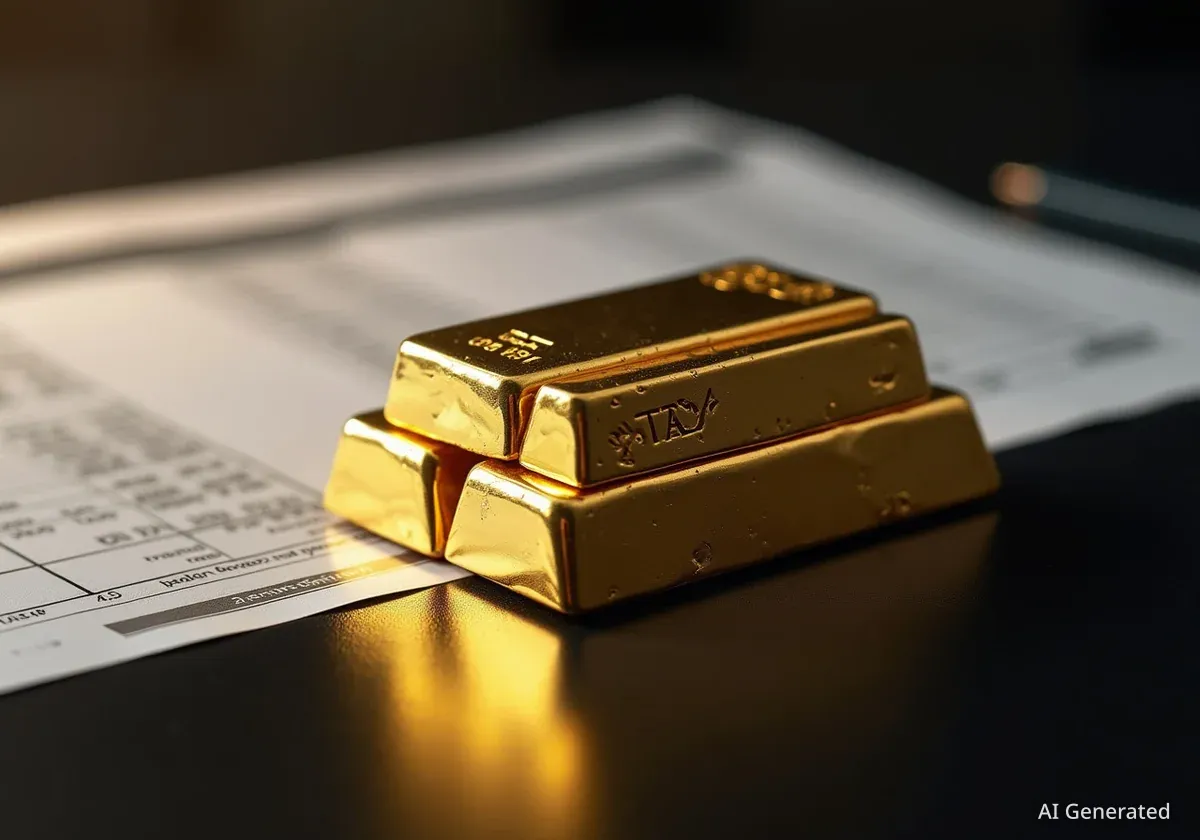Global financial markets are holding a collective breath this week, with investors closely monitoring the upcoming release of the U.S. Core Personal Consumption Expenditures (PCE) price index. This key inflation gauge, favored by the Federal Reserve, is expected to be a major catalyst for price movements across several asset classes, including precious metals like gold and silver, energy commodities, and the U.S. dollar.
While gold and silver are poised for potential breakouts, oil markets are facing bearish pressure from demand concerns. Meanwhile, platinum is emerging as a metal to watch, potentially following gold's upward trend. The U.S. dollar's recent strength also faces a critical test, with the PCE data likely to dictate its next move and influence the broader market landscape.
Key Takeaways
- The upcoming U.S. Core PCE inflation data is the most significant economic release this week, heavily influencing Federal Reserve policy expectations.
- Gold and silver prices are highly sensitive to the inflation report, which could trigger significant price swings depending on the outcome.
- Platinum is gaining attention as a potential high-performer, with some analysts suggesting it could follow gold's recent breakout pattern.
- Crude oil markets maintain a bearish outlook due to persistent global demand concerns and uncertainty surrounding OPEC+ production policies.
- The U.S. Dollar Index (DXY) is at a pivotal point, with its recent rebound facing a test from the PCE data and its implications for interest rates.
The PCE Inflation Report: A Decisive Market Catalyst
The primary focus for traders and economists this week is the Core PCE price index. This metric is the Federal Reserve's preferred measure of inflation because it provides a comprehensive look at consumer spending and excludes volatile food and energy prices, offering a clearer view of underlying inflation trends.
Market expectations are finely balanced. A higher-than-expected inflation reading could signal persistent price pressures, potentially forcing the Federal Reserve to maintain its restrictive monetary policy for longer. This scenario would likely strengthen the U.S. dollar and put downward pressure on non-yielding assets like gold.
Conversely, a softer inflation figure could increase the probability of an earlier-than-anticipated interest rate cut by the Fed. Such a development would typically weaken the dollar and provide a significant boost to precious metals prices.
Why the Fed Watches PCE
The Federal Reserve officially targets a 2% inflation rate based on the PCE index. Unlike the more commonly cited Consumer Price Index (CPI), the PCE's composition changes as people substitute goods and services in response to price shifts. This makes it a more dynamic and, in the Fed's view, more accurate reflection of consumer behavior and inflation.
Precious Metals Positioned for Volatility
The precious metals complex is particularly sensitive to the outlook for inflation and interest rates. Investors are watching gold, silver, and platinum for clues on their next directional move.
Gold and Silver Await a Trigger
Gold (XAU/USD) has been trading in a consolidated range after a strong upward move, with investors awaiting a fresh catalyst. The PCE data is widely seen as that potential trigger. An inflation reading that supports a more dovish Fed stance could help gold break through key resistance levels.
Silver (XAG/USD) has recently shown significant strength, with its price reacting positively to market shifts. As both a precious and industrial metal, silver's performance is tied to monetary policy expectations and economic activity. A favorable inflation report could amplify its recent gains, potentially leading to a more substantial rally.
"The price action in both gold and silver indicates that the market is waiting for confirmation from the Fed's preferred inflation gauge before committing to a new trend. The outcome of the PCE report will be pivotal for short-term price direction."
Is Platinum the Next Breakout Star?
While gold and silver capture most of the headlines, platinum is quietly gaining traction among analysts. The metal, which has significant industrial applications, particularly in automotive catalytic converters, has lagged behind gold's recent performance. This performance gap has led some to speculate that platinum is undervalued and poised for a potential surge.
If the PCE data provides a tailwind for the precious metals sector, platinum could attract significant investment interest as traders look for the next asset to rally. Its current price relative to gold makes it an attractive proposition for those anticipating a broader move higher in the metals complex.
Energy Markets Grapple with Headwinds
The outlook in the energy sector is markedly different, with both crude oil and natural gas facing distinct challenges.
Crude Oil's Bearish Outlook Persists
Crude oil prices, for both Brent and West Texas Intermediate (WTI), are currently trading below their 52-week moving averages, a technical indicator often interpreted as a bearish signal. This weakness is driven by two primary factors: lingering concerns about global economic growth and its impact on fuel demand, and uncertainty regarding future production cuts from OPEC and its allies (OPEC+).
Key Oil Market Factors
- Demand Concerns: Slowing economic activity in major economies like China and Europe is weighing on the demand forecast for oil.
- OPEC+ Policy: The market is awaiting clear signals from the producer group on whether current production cuts will be extended or deepened.
- Strong Dollar: A strengthening U.S. dollar makes oil, which is priced in dollars, more expensive for holders of other currencies, further dampening demand.
Natural Gas Bulls Defend Critical Support
The natural gas market is at a technical crossroads. Prices have pulled back to a key support level, where bullish traders are attempting to halt the decline. This level represents a critical battleground; a failure to hold this support could lead to a deeper sell-off. Market risks are mounting as traders weigh inventory levels, weather forecasts, and industrial demand against the technical picture.
U.S. Dollar Strength Faces a Key Test
The U.S. Dollar Index (DXY), which measures the greenback's value against a basket of six major currencies, has experienced a rebound recently. However, this recovery is fragile and heavily dependent on the upcoming economic data.
The PCE report is the most significant test for the dollar this week. A hot inflation print would reinforce the 'higher for longer' interest rate narrative, likely pushing the DXY higher. This would have ripple effects across markets, creating headwinds for commodities like gold and oil.
Conversely, if the data shows that inflation is cooling more quickly than anticipated, it would undermine the dollar's recent gains and provide relief for other asset classes. Investors will be scrutinizing the report not just for its headline number, but for details that could shape the Federal Reserve's path forward in the coming months.





